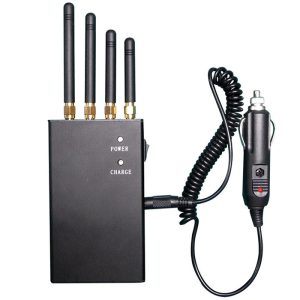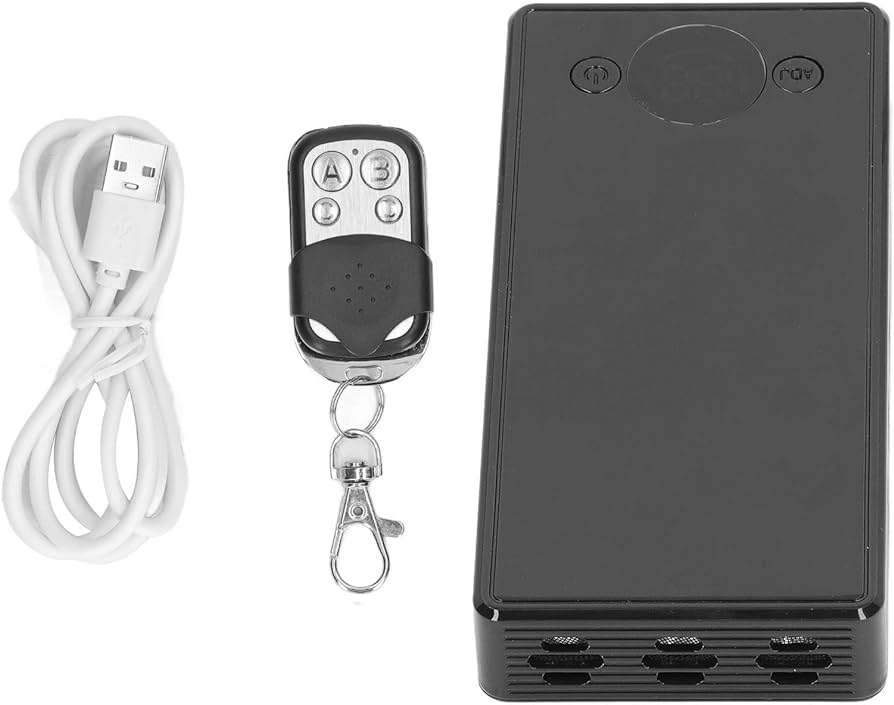A jammer is a device that transmits radio frequency signals to interfere with communications equipment like cell phones, Wi-Fi networks, or GPS systems. Basically, it blocks the signal between a transmitter like a cell tower, and a receiver like your phone.
Jammers come in a range of power levels and can disrupt signals within a limited range, like in a single room, or over a much wider area. They work by emitting radio frequency signals on the same frequency as the communication equipment they aim to jam. This overpowers the original signal, effectively blocking it.
- Higher power jammers, like those used by law enforcement, can jam signals over a mile away and interfere with emergency communications. For this reason, jammers are illegal for consumer use in many places.
- Lower power jammers marketed as “Wi-Fi deauthenticators” or “cell phone blockers” have limited range but are also illegal in most areas. Some claim to block signals in a discrete area like a movie theater, but they can still cause unintended interference.
Instead of using an illegal jamming device, there are lawful alternatives for blocking signals, like using a Faraday cage, turning on airplane mode, or simply not using electronics.
Key Features to Look for When Buying a Jammer
When buying a jamming device, there are a few key features to consider to ensure you get one that suits your needs.
1. Power and Range
The power output, measured in watts, determines how strong of a jamming signal the device can transmit and how far it will reach. For home use, a low to medium-power jammer (around 3 to 5 watts) should work well and cover the average house. Higher power units (10 watts or more) are better for commercial spaces or open areas but may require a license to operate.
2. Number of Frequencies
Most jammers block a range of frequencies, like cell signals or WiFi networks. More advanced jammers can block multiple frequency ranges at once. Choose a jammer that blocks the specific frequencies you want to jam, whether cell, GPS, WiFi, or all of the above. The more frequencies it jams, the higher the price tag.
3. Size and Portability
Jammers come in all shapes and sizes. Smaller handheld units are very portable but typically have lower power. Larger desktop jammers provide more power but aren’t very portable. For maximum flexibility, consider a mid-sized jammer that balances power and portability. Some jammers also come with vehicle chargers for mobile operation.
Top Jammers on the Market Today
With so many jammers on the market, it can be tricky to determine which is right for you.

Here are some of the top jammers available today based on effectiveness, reliability, and affordability.
1. GPS Jammer
A GPS jammer blocks signals from GPS satellites to disable location tracking and navigation. These are very effective for jamming GPS receivers within a large range. However, GPS jammers also block signals for emergency responders and are illegal for most uses. Only purchase a GPS jammer if you have a legitimate reason and proper authorization.
2. Mobile Phone Jammer
A mobile phone jammer blocks signals from cell towers to disable mobile phones within its range. These come in low to high-power versions to jam phones in small buildings up to large event venues. While very useful for enforcing “no phone” policies, jammers that block emergency communications are illegal for most individuals and organizations to own and operate.
3. WiFi Jammer
A WiFi jammer blocks signals from routers and access points to disable wireless internet connectivity within its range. These are good for controlling internet access in classrooms, workplaces, or any location where WiFi may be distracting. However, WiFi jammers can disrupt network connectivity for emergency responders and essential internet-connected devices. Check your local regulations before purchasing a WiFi jammer.
You can buy it from Amazon using the link below:
4. Drone Jammer
A drone jammer blocks control and navigation signals to disable drones flying within its range. These are useful for protecting privacy or enforcing no-fly zones for drones. However, jamming signals that could interfere with emergency responders is illegal for most individuals and organizations. Drone jammers also require proper authorization to own and operate.
How to Use Your New Jammer Safely and Responsibly
Now that you have your jammer device, it’s important to use it properly and responsibly. Misuse of jammers is illegal, so follow these guidelines to stay within legal boundaries.
1. Do your research
Make sure you understand exactly what kinds of signals your jammer blocks before turning it on. Check if it jams cellular, WiFi, GPS, or a combination. Know how strong the jamming range is so you don’t accidentally disrupt signals farther than intended.
2. Only use it on your own property
It is illegal to use jammers on public airwaves or outside of areas you own or control. Only activate your jammer within the confines of your home, vehicle, or workplace. Never use it in public places like restaurants, parks, or stores.
3. Don’t interfere with emergency communications
Never jam frequencies used by emergency services like police, fire departments, or hospitals. Your jammer could prevent someone from calling for help in a crisis. Check what radio bands emergency responders in your area use and avoid jamming those.
4. Consider your neighbors
Be courteous to others who live or work nearby. Make sure your jamming activity does not disrupt their signals or devices. If possible, adjust the jamming range to cover only the space you need. Let neighbors know if they report interference so you can temporarily disable your jammer if needed.
5. Turn it off when not in use
Only run your jammer for the minimum time needed. Turn it off when you leave the area or no longer need to block signals. There’s no need to jam 24 hours a day, 7 days a week. Give surrounding radio frequencies a break when you can.
READ ALSO- The Harrelson’s Own CBD Review (2023 Update)
Conclusion
Using your jammer responsibly and cautiously will help avoid legal trouble and annoyance to others. While jammers can be useful devices, they need to be operated properly within legal limitations. If in doubt, do additional research on the rules for jammers in your country and area. It’s always better to be safe than to end up jammed!
